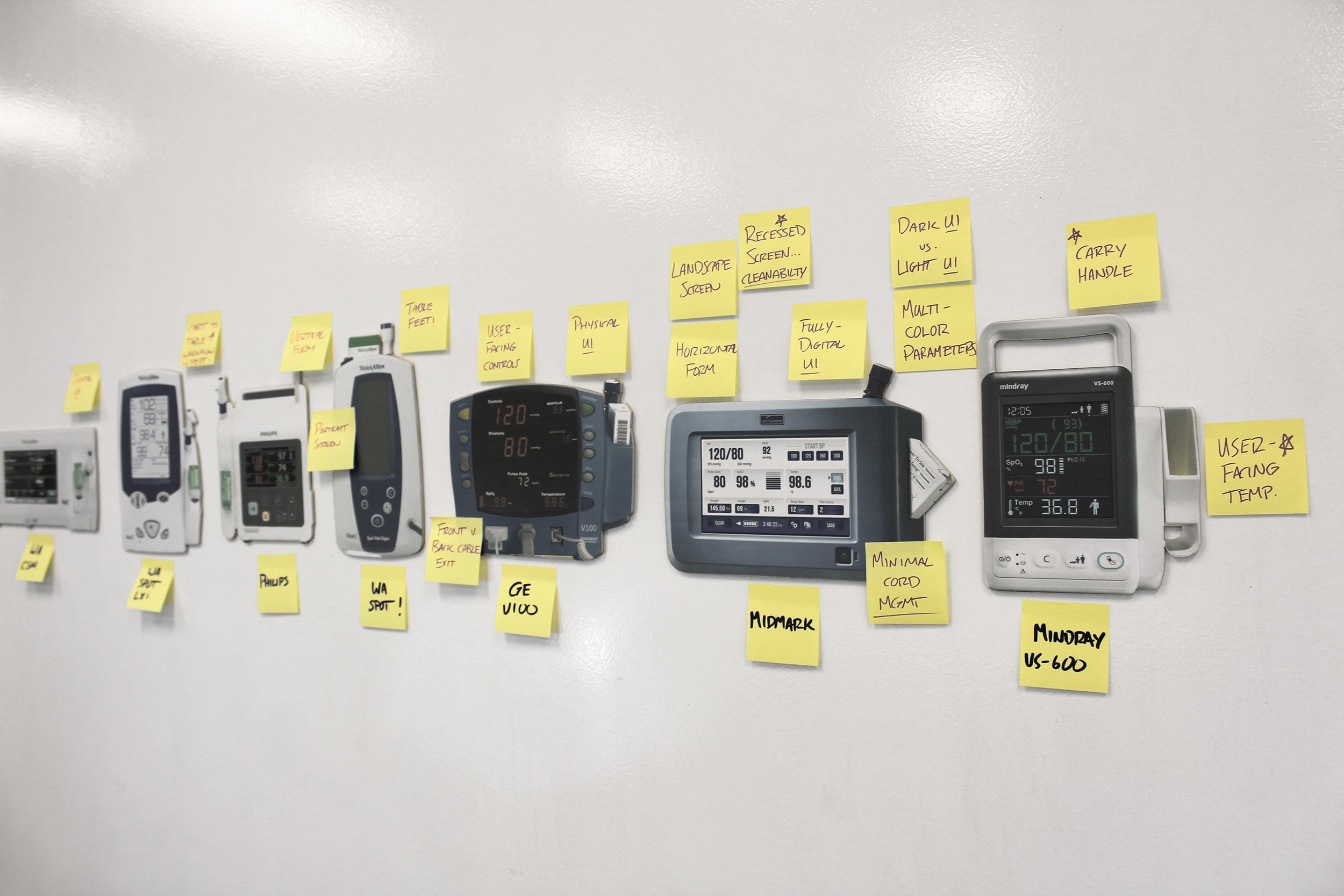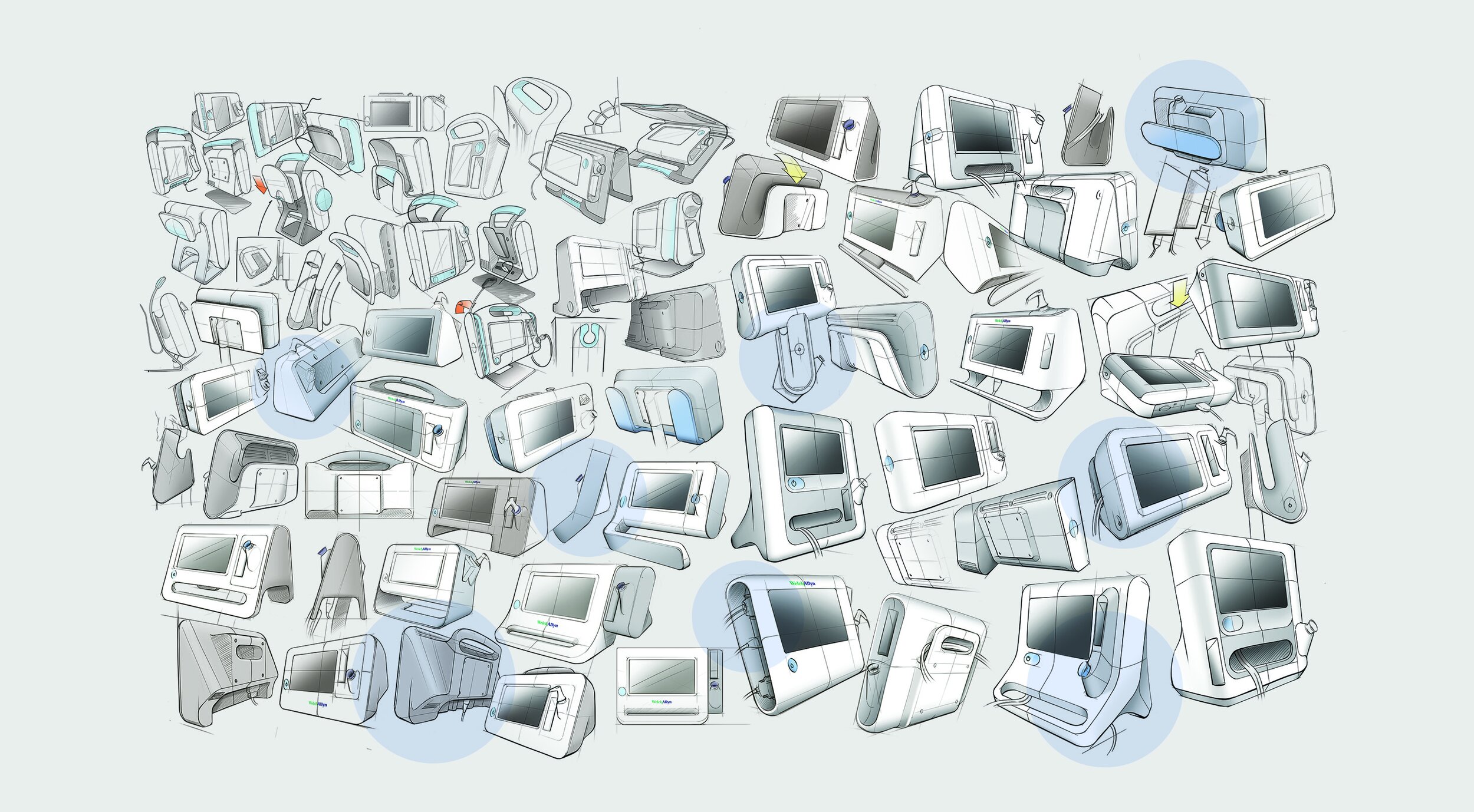
Spot Vital Signs 4400 Monitor
Hillrom
Project Background
The Welch Allyn brand developed the original Spot Vital Signs Monitor in the 1990s which became one of the most user friendly and trusted monitors on the market. Welch Allyn’s monitor portfolio evolved and now had a higher-tier offering - the Connex Spot Monitor (CSM).
The original Spot Monitor had several end-of-life parts and the business decided to utilize internal components from the CSM to develop a new Spot Monitor as a de-featured, lower-tier offering to CSM.
Project Objective
All vital signs monitors look the same to the clinicians who use them. This was problematic for the next-gen Spot Monitor because it would exist within the same care settings as the CSM, but was used in distinctly different workflows.
My role at the Industrial Designer was to design a monitor that was intuitive to use, low cost, and was distinguishable from the CSM.
This was a highly constrained project. My challenge was to use form, proportion, and interaction to ensure this monitor would be differentiated in a meaningful way to the user while aligning with the Hillrom Design Language.
What is a Vital Signs Monitor?
Vital signs monitors are devices used by medical personnel to record and monitor patient vital signs. This is the first line of care patients receive when being assessed, forming a baseline for care.
Temperature
Pulse Rate
Respiratory Rate
Blood Pressure



Cord management was a major pain point for nurses while taking vitals and transporting monitors. We mocked up 3D printed appearance models to test workflows in context with nurses to narrow down possible cord management solutions.
I collaborated with our UX & clinical team to drive the planning and moderation of all rounds of usability research in our research lab. This contextual testing played a major part in downselecting and validating design directions, ensuring that usability remained front and center in decision making.
After extensive testing, we down-selected to two main architectures and decided to pursue Arch 01. It was the clear user preference and was the best expression of the Hillrom Design Language.
Unfortunately, thermal testing of Arch-01 showed an increased risk of temperature reading inaccuracies due to the position of the temperature probe. With program schedule and cost pressures, the business made the decision to pivot late in development to Arch-02.















